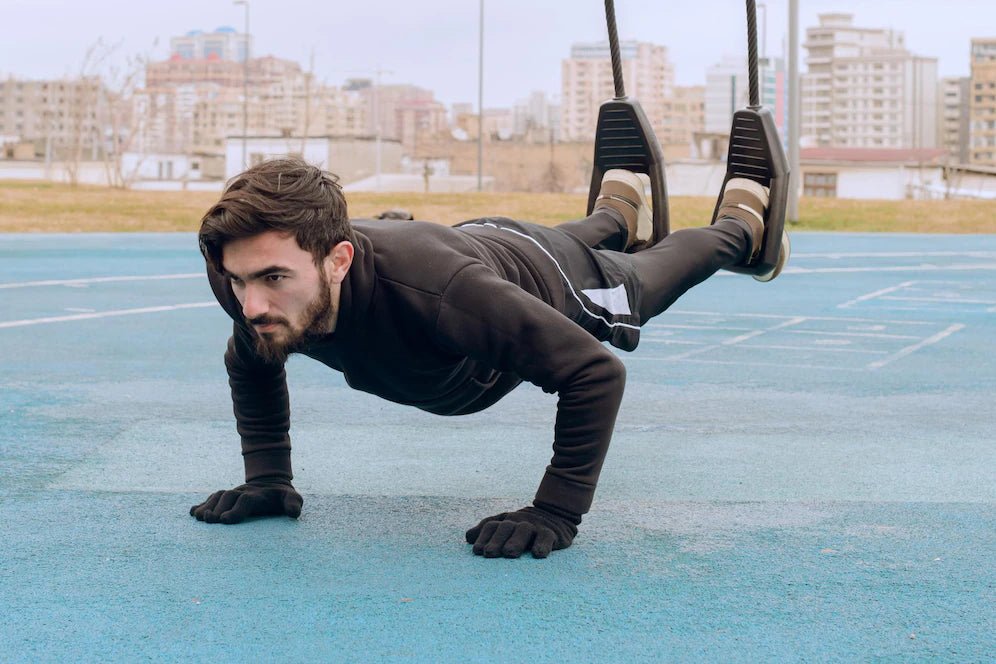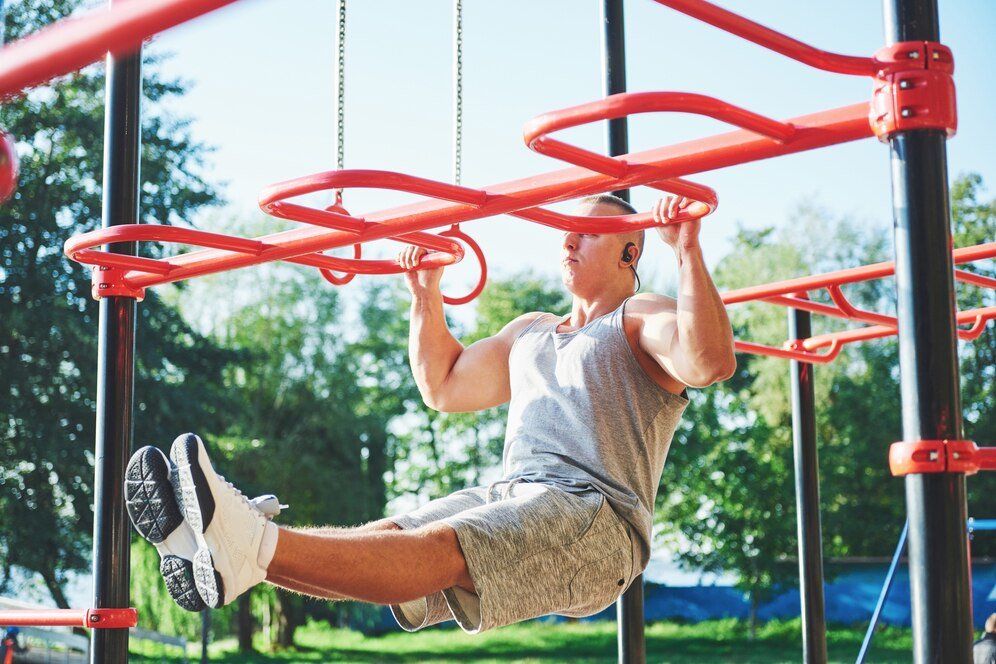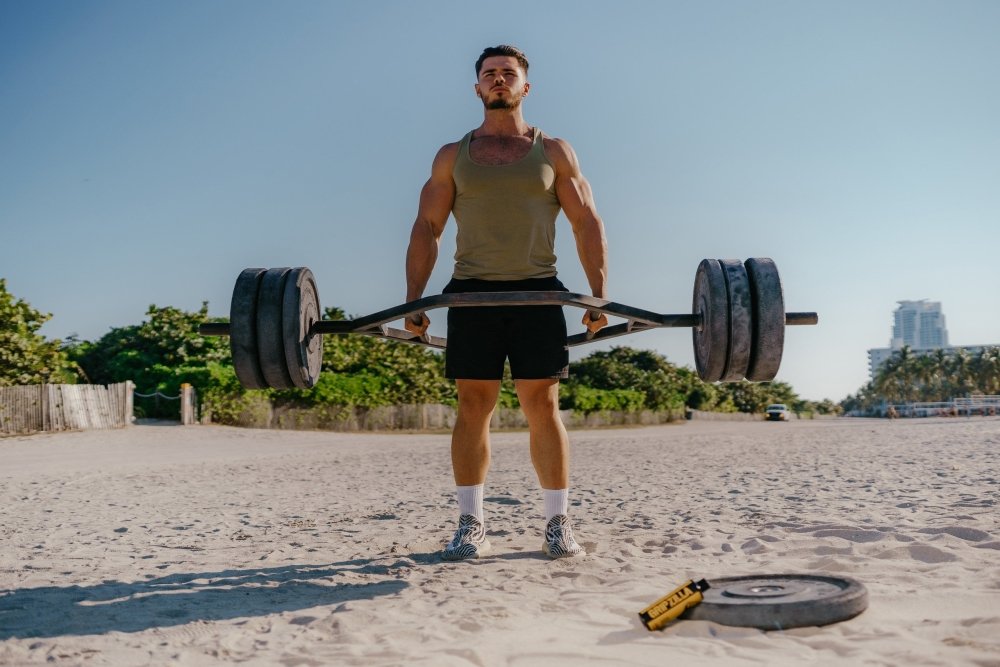Are you just starting out in the world of calisthenics?
Whether you’re taking your first steps into bodyweight training or looking for advice to help take your fitness journey one step further, there are plenty of calisthenics tips and tricks to get you started.
As a discipline that can be adapted for all skill levels, calisthenics offers a wide range of exercises, from basic moves up to more complex ones that require various techniques.
This blog post is here to provide newbies with some top calisthenics tips on building a solid foundation in the art of calisthenics and ensuring progression as you go along.
So, shall we begin?
Let’s go!
1. Set Realistic Goals

Goal-setting is an excellent approach and one of the best tips for beginners to monitor their calisthenics development. This will enable you to keep track of your current development while anticipating your future callisthenic workout milestones and goals.
We advise using the smart goal-setting technique when it comes to calisthenics, which stands for: specific, measurable, achievable, relevant, and timely.
It involves establishing a clear objective for oneself that you can accomplish given your current skill level, and that can be tracked over time to determine your progress.
For example, as a beginner in calisthenics, your initial aim might be to perform 5 pull-ups; as you progress, this goal might be changed to 10, 20, and so on.
It's crucial to be realistic with your goals; for example, don't expect to be performing freestyle calisthenics while swinging off a bar after just one month of starting your calisthenics practice.
2. Pay Attention To Warmup, Stretch & Recovery

Another ingenious calisthenics tip for beginners is not to underestimate the value of warm-up, stretching, and recovery.
No matter how new to calisthenics you are, taking the time to warm up properly before your workout, stretch and cool down after, and then allow for proper rest and recovery is essential to not just enjoying yourself but also keeping your body safe and preparing it to get stronger.
Your body will be ready for the activities you'll be undertaking during your workout program after an 8–12-minute dynamic warmup.
Don't just exit the gym after your workout and call it a day without performing a good static stretching cool-down regimen, again aiming for at least 8 to 12 minutes.
Beginning any exercise regimen, including calisthenics, by working out every day of the week is intellectually and emotionally stressful as well as physically demanding. Every third day, or preferably, include a couple of rest and recuperation days so your body can heal.
This doesn't imply staying in bed all day; instead, continue doing something easy like going for a stroll, taking a leisurely bike ride, or even gardening.
3. Equipment Can Make All The Difference
There is no doubt that you may perform calisthenics without equipment, as numerous calisthenics exercises are available; nonetheless, you must not overlook the importance of having the greatest quality equipment.
One thing is for certain, the way you can train your body muscles with calisthenics equipment won’t be possible to happen otherwise.
4. Body Alignment Can Produce Results
Another amazing calisthenics tip for beginners is always to ensure your body is aligned when exercising.
Our body's alignment is defined as how the head, shoulders, spine, hips, knees, and ankles relate to one another. Good alignment helps to maintain good posture by relieving pressure on the spine.
You will only have your body weight to support you if you perform static calisthenics in its classic form.
Your core is crucial when it comes to bodyweight exercises since it keeps you balanced. Your entire body will feel it if your core is weak or loose, and you risk hurting yourself if you try to enter a calisthenics movement.
Before starting your calisthenics routine, do a basic planking stance to help align and strengthen your core.
5. Calisthenics Diet Is A Must

It's possible that many of you read this tip and wondered what the calisthenics diet actually entailed. The calisthenics diet is simple, much like the exercise itself.
You will not need to measure or weigh food or keep a food journal because this diet is adaptable to your fitness objectives.
One of the recommended calisthenics tips is to eat only fresh and lean produce whenever feasible to get the best results from the calisthenics diet.
Lean is always preferable, whether it's meat or fish; if it's packaged with a lot of substances or additives, stay away from it at all costs.
In order to provide your body with essential vitamins and minerals, we also advise eating as many fruits and vegetables as you can stomach.
Some calisthenics athletes also engage in an eating restriction known as intermittent fasting, during which they only consume food during specific times of the day and never otherwise.
This enables the athletes to pack their meals with foods that are high in nutrients, which will feed their bodies for a long time and prevent them from nibbling.
Over To You
Although calisthenics may seem daunting at first, following these calisthenics tips should make working out more enjoyable and less intimating.
And for all the fitness lovers out there- don't forget to have fun!
Exercising should be about pushing your boundaries, not feeling bogged down by them.
So, get out there and start exploring what your body is capable of today.
Let’s follow these calisthenics tips as a beginner and become a pro at it sooner than later.
FAQs
How long should a beginner do calisthenics?
Workouts involving calisthenics can be completed in as little as 30 to 40 minutes. This amount of time is sufficient to train the leg, push, and pull muscles, as well as the other three major callisthenic muscle groups.
Can I just do calisthenics every day?
The brief answer is, yes. However, training every day is not necessary. Keep in mind that daily movement is just as important as training. A 20-minute handstand practice, 20 burpees, or 10 minutes of yoga are all examples of movement snacks.
Is calisthenics better than gym?
Calisthenics are more effective at burning calories, which could aid in weight loss and body fat reduction. It does this because it moves about a much. More energy is needed for this, which your body obtains through calorie burning. You can lose weight by burning more calories than you consume.



